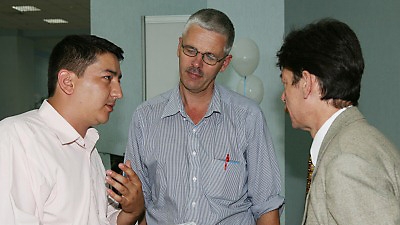Challenge
The Government of Guatemala was aware of the need for public financial management reform; however, it did not have a blueprint of what was needed and how to implement the reform. The Government sought assistance of analytical work to help establish a baseline to guide the country’s reforms and to work out an action plan to modernize the financial management systems.
The Bank and other donors supported the Government with the Public Expenditure and Financial Accountability (PEFA) methodology, an internationally accepted standard to analyze and assess public financial management systems.
Solution
In 2009, the Guatemalan Government agreed to a Bank-proposed “PEFA Plus” approach. This approach provided prioritized recommendations in addition to the PEFA assessment (which usually does not provide recommendations). The effort involved extremely close and persistent collaboration with the Government, leading to an iterative process to determine evidence that justified the final PEFA scores, and to address long-standing issues of transparency and accountability.
After the assessment, and to help the Government implement the recommendations, representatives from the Bank, the Inter-American Development Bank (IADB), the European Union (EU), and the Guatemalan Government formed a joint supervision and monitoring team. Validation workshops were organized and yielded candid discussions and re-thinking. The discussion brought to light some sensitive matters, such as the institutional arrangements for budget execution outside the public financial management information system and unrecorded liabilities, which created unregistered debt in the Government’s financial statements.
After three years, a second PEFA Assessment was conducted to evaluate and confirm the progress of the reform.
Results
The Following results were achieved through the project.
- An initial action plan was immediately prepared with the results of the PEFA Assessment 2009 and was presented to the Cabinet and adopted by the Ministry of Finance in 2009.
- Municipal planning and delivery of social services were enhanced by the adoption of the recommendation to provide municipalities with the annual subvention early in the fiscal year.
- Confidence in the Government’s accountability for public finances rose as the Government assumed responsibility for the floating debt, undertook an audit with assistance from the International Monetary Fund (IMF), and, in June 2013, announced that it would issue bonds to pay off US$450 million of debts that had accumulated over two governments and which were not included in the 2013 budget.
- The Government’s PEFA scores improved. Comparing the 2009 and 2012 PEFA assessment years, two of the scores were significantly improved: - From “C” to an “A” for classification of the budget (which allows the tracking of spending across administrative unit, economic activity, and program). - From “D” to a “B” in transparency of inter-governmental fiscal relations (which frequently translates as sub-national governments providing primary social service delivery) with respect to transparent and rule-based systems.
- An indicator of future success was the high level of discussions of PEFA Plus recommendations, which were presented to the President and Vice President at a full cabinet meeting.
Bank Group Contribution
For the PEFA Assessment 2009, the Bank provided about US$40,000 for a series of missions for analytical and advisory services. The missions began with the assessment’s inception and continued through the Concept Note, through supervision and monitoring, to the meeting with the President, Vice President, and Cabinet and the final delivery of the report.
For the analytical work of the second PEFA, the Bank contributed staff time.
Partners
The Bank collaborated with the Inter-American Development Bank (IADB) and the European Union throughout the process. The partners worked at two levels:
- Level One included the Technical Working Team, which was led by co-TTLs of the Bank and the IADB and members from both institutions.
- Level Two included the Steering Committee, formed by the EU, the Guatemalan Government of Guatemala, IADB and the World Bank to make important decisions.
In addition to Bank funding, the IADB and the EU provided financial support.
Moving Forward
The Guatemalan Government continues to implement some of the recommended areas of the reform.
Beneficiaries
The beneficiary of the project is Government of Guatemala.
“One of the most significant outcomes of the PEFA report is the decision to develop a Strategic Plan for the improved public financial management based on the results of the PEFA Analysis.” Marco Antonio Gutiérrez Montufar, Vice Minister of Internal Administration and System Development, Ministry of Finance.

